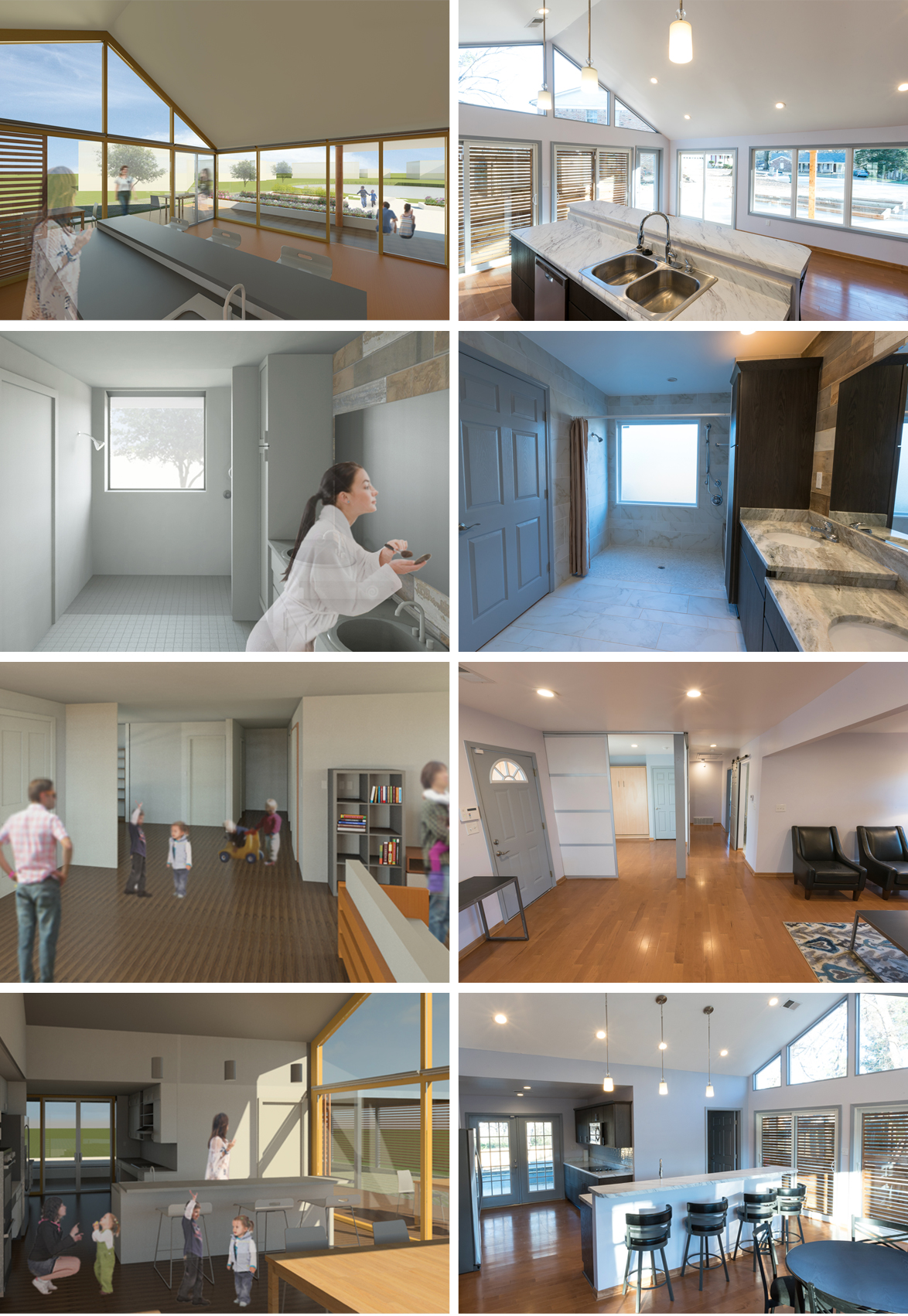We are all aging, which is a beautiful thing. But more than adding numbers to our age, we are getting older, which means adding more years of experience in this beautiful world. Along with this experience should come a recognition that we will be at a disadvantage with only blind trust in an easy future. Aging and getting older have to be met with a sense of wonder and preparation, especially when we consider that more than 30 percent of all Americans will end up in a nursing home in the later years of life. Many could avoid this outcome by preparing their homes and their environments early, in anticipation of changes that may come with each passing year.
“A home that supports our physical and social well-being will very naturally evolve for us over time.”TWEET THIS
When we think of home, we think of the place we feel most nurtured and at peace. But when certain aspects of a house or apartment go unaddressed, even a small physical handicap or prolonged illness can turn into a deal-breaker, making it impossible to live in the place we want to live. Ninety percent of all Americans want to age at home – and fulfilling that wish is possible, but only when we prepare early and rethink architecture and neighborhoods at once. This is why the Home Today, Home Tomorrow Design Challenge is such a milestone. The competition invited architects and designers from around the country to redesign a typical suburban home in Memphis (one that was designed for the young and healthy only) into a home for all ages. As an architect and a longtime advocate of design for all ages and abilities, I have learned that a home that supports our physical and social well being will very naturally evolve for us over time. For example, if we cannot get out of bed, we should be able to see outdoors; if we cannot drive to see friends, they should be able to visit us easily.
The winning scheme, a blueprint for the home’s remodel, met these goals in several ways. It eliminated all stairs for safe and smooth transitions between levels indoors and outdoors, and expanded the bathroom to accommodate a wheelchair when needed. It also included all key details in terms of appropriate task heights for a person seated in a wheelchair, while taking into account accessibility and safe grab-bar placement to make cooking, eating, bathing, and relaxing possible for all ages. The design also positioned one flexible room at a strategic location: This multipurpose room can be connected with a large open door to the living room. It’s a simple move, but magical. That one flexible room can be used as an extension of the living room, as a separate home office, or as the ground-floor bedroom for a person who is in bed for an extended period of time. Proximity to the living room and views through the large doorway allow for the inclusion of a person in bedroom in the daily social activities in the house. The house itself opens up to the neighborhood with a large expanse of windows, visually connecting to the outdoors, and, even more important, creating an informal connection to the neighbors. We all know that we are stronger within a community, and such relationship needs to be facilitated and nurtured. This house design does exactly that. It breaks down walls and invites people to engage. Just imagine what a difference it will make when a neighbor swings by to say hello and help with errands without being asked. The house, an extension of its occupants, invites people inside.
The transformation of the house was not rocket science, but it makes all the difference between aging comfortably at home and the alternative of being forced to move into a senior facility that is impersonal, and away from family, neighbors, and the activity of a community. Accomplishing that it is so easy in many ways. Hopefully knowing these simple steps wakes up the masses, and urges people to take notice that they should and can remodel a house to be age-independent and supportive of its owner all life long.
But these remodels can’t happen overnight. The key is to do this kind of work in the home early, before any physical or social challenges occur, so we can live a worry-free life. An age-friendly home is a better home. Who does not want to have a home that encourages socializing with the neighbors? Who does not want to have a bigger and more comfortable bathroom? Who does not want to have a home that is safe and secure and protects us from falls. I want that – and I am 45 years old! I am honored that I was invited as a judge for this milestone competition, and my wish is that this one house opens the eyes of all 78 million Baby Boomers in this country and encourages them to review their homes and make key changes if needed. Today is the day. Start taking these steps one at a time or all at once so you can live the life you want, all life long.

